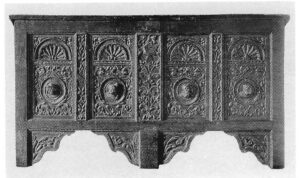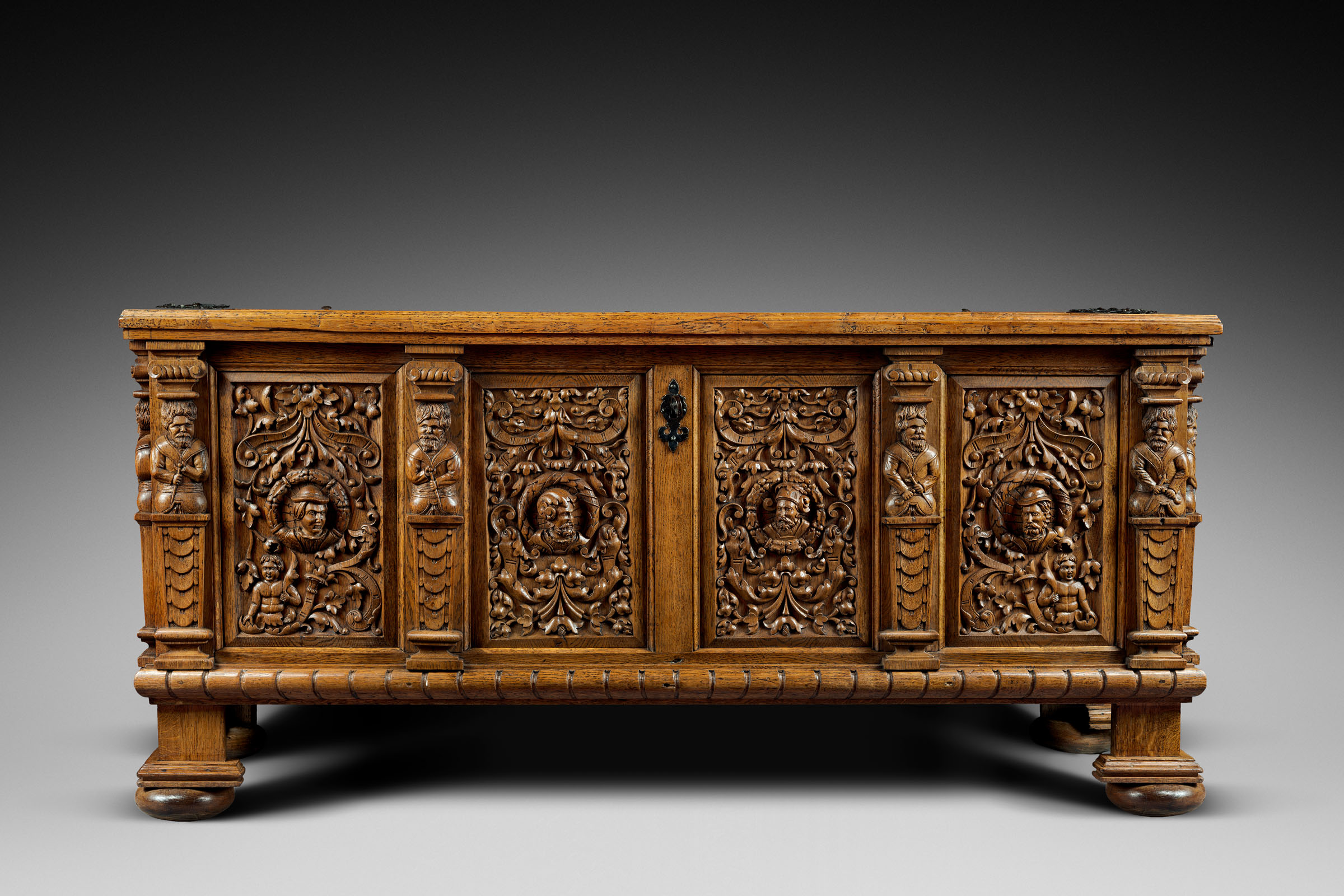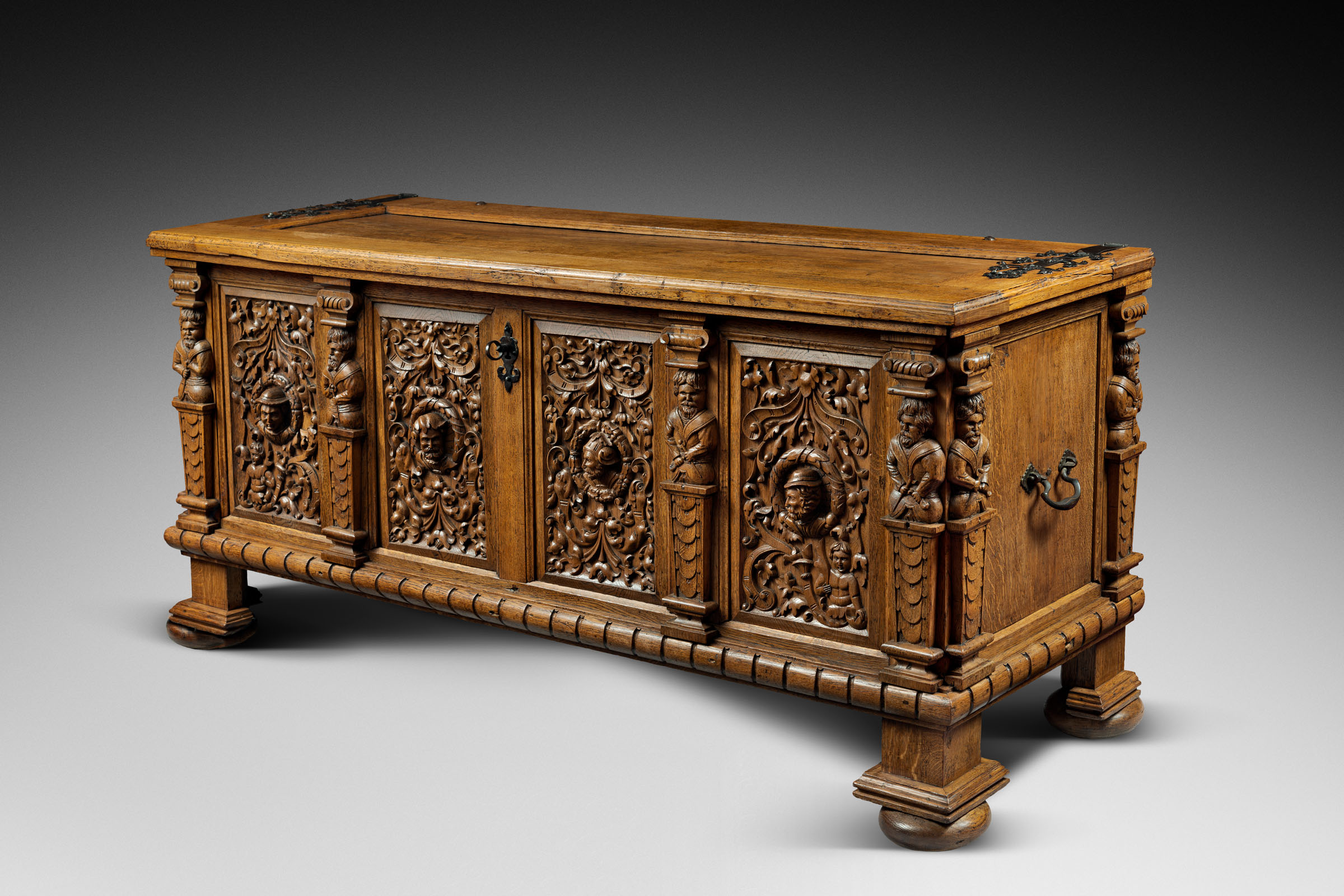Description
This beautiful and robust chest stands on square feet ending in flattened buns. The base presents plain mouldings. The facade is divided in four panels and four sheathed male terms. Each panel figures a medallion depicting individualised male profiles. The two central men wear surprising headdresses made of leaves while the two lateral ones wear hats. Each medallion is set on a background of crowded scrolls and foliage. On the two side panels a little character appears in the bottom angles.
The terms are all identical. A bearded man with lush hair holds between his thighs a pick or little knife and a purse. They are depicted mid-thigh and stand on a sheath ornate with coin motifs.
On the sides, the plain panels are framed by the same terms. A wrought iron handle is located in the centre of the panel.
The top is highlighted by a bulging moulding. The lid is secured through finely worked hinges with a vegetal decor.
The iron-work plays a discreet role but is of high quality.
At the crossroads of German, Flemish and Italian influences, this chest bears witness to the artistic productions of the 16th century cities. Those ever-evolving places metamorphosed gold gained from trade and banking, into true art pieces that are the signs of their wealth and prestige.
From Flanders, Germany borrows the idea of the sinking lid. Furthermore, ornamentalists from Germanic countries are seduced by the scroll motifs coming from Italy as much as the human figure that they treat more often in an individualised than repetitive manner. The taste for architecture can be found in the transformation of jambs into terms, another trace of Italian influence.
The portraits and the all-male terms allow us to think the chest might have been made for a brotherhood.
A chest presenting a similar decor is kept in the collections of the museum of Hamm, Germany.



